Last updated on December 26th, 2023 at 11:34 am
The Engine Control Module (ECM), often referred to as the “vehicle’s brain”, plays a crucial role in modern vehicles by managing and regulating various vehicle functions. The ECM continuously monitors and adjusts numerous parameters such as fuel injection, ignition timing, and engine idle speed to ensure optimal engine performance, fuel efficiency, and reduced emissions. Given its pivotal role in maintaining a vehicle’s health, timely replacement or repair of a faulty ECM is imperative. Neglecting a failing ECM can lead to deteriorating vehicle performance, increased fuel consumption, and potential safety issues, emphasizing the importance of proper and timely maintenance of this critical component.
The Engine Control Module (ECM), Powertrain Control Module (PCM), and Engine Control Unit (ECU) are all essential components of a vehicle’s electronic control system, yet they perform distinct roles. The ECM, often likened to a vehicle’s brain, primarily oversees engine-related functions, including ignition timing, fuel mixture, and emission control. It essentially ensures optimal engine performance and efficiency by continuously monitoring and making necessary adjustments.
The PCM, on the other hand, is a broader control unit that oversees both the engine and transmission systems. It combines the functions of the ECM and the Transmission Control Module (TCM), ensuring seamless coordination between the engine and transmission to optimize overall vehicle performance.
Signs of a Failing ECM
Check Engine Light: One of the most common signs of a potential ECM failure is the illumination of the “Check Engine” light on your vehicle’s dashboard. This light is triggered when the ECM detects an anomaly within the engine system. Interpreting ECM-related error codes can provide insight into the specific issue and guide the necessary repairs or replacements.
Engine Performance Issues: If your vehicle is stalling, misfiring, or showing signs of poor fuel efficiency, these could be indications of ECM failure. The ECM manages key parameters to ensure optimal engine performance. A malfunctioning ECM might fail to regulate these parameters effectively, leading to such issues.
Electrical Irregularities: The ECM controls multiple electronic components in your vehicle, including the power windows, lighting system, and dashboard instruments. If you notice unexpected behavior in these components, it could be a sign of ECM failure.
Starting Problems: Experiencing difficulty in starting the engine or sudden breakdowns can also point to a failing ECM. The ECM plays a crucial role in the ignition process, and any issues with it can obstruct the smooth starting and operation of the engine.
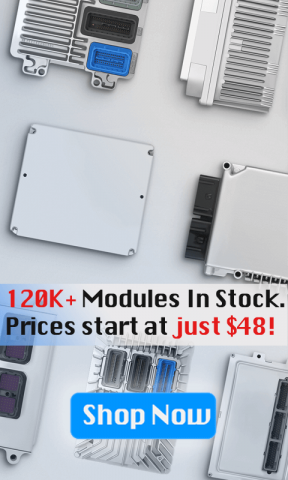
Diagnosing ECM Problems
When the aforementioned signs of ECM failure surface, it’s crucial to accurately diagnose the problem to avoid further damage to the vehicle.
Professional Diagnostic Tools
Professionals typically use advanced diagnostic tools such as On-Board Diagnostic scanners (OBD-II scanners) to detect ECM issues. These devices connect directly to the vehicle’s OBD-II port and collect data from the ECM, providing a detailed analysis of any detected faults and their corresponding error codes. Technicians can then interpret these error codes to understand the underlying issue and decide on the necessary repair or replacement procedures.
DIY Diagnosis
If you’re a car enthusiast or an aspiring DIY mechanic, basic ECM problem diagnosis can be carried out at home with an OBD-II scanner. These devices, widely available for purchase online, can read ECM error codes and even clear them once the issue has been addressed. However, it’s important to remember that while DIY diagnosis can provide an initial insight into potential ECM issues, it doesn’t replace professional diagnosis and repair.
Common Causes of ECM Failure
ECM failures can often be traced back to a specific set of causes. Understanding these causes can aid in preventive maintenance and early detection of potential issues:
Environmental Factors: The ECM, despite being housed inside the vehicle, can be susceptible to external environmental factors. Heat can cause thermal stress on the ECM, leading to component failures. Moisture can lead to corrosion of electronic parts, and excessive vibration can damage the delicate circuitry inside the ECM.
Electrical Issues: Electrical problems within the vehicle’s system can have a damaging effect on the ECM. Short circuits can cause unexpected current flow, damaging sensitive components. Voltage spikes, often the result of faulty wiring or malfunctioning alternators, can also lead to ECM damage by exceeding its designed operation limits.
Physical Damage: Accidents that result in significant impact can damage the ECM, especially if its mounting location is compromised. Even regular wear over time can lead to the eventual breakdown of the ECM, as components wear out and connections weaken. Regular inspection and timely replacement of worn-out parts can help avoid such failures.
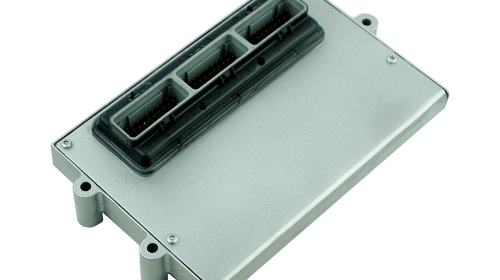
ECM Replacement Process
Replacing a faulty ECM is a task that certainly requires some technical knowledge, but with the right tools and guidance, it can be managed. Below is a step-by-step guide on how to replace an ECM.
Step 1: Selecting the Correct ECM
When it comes to choosing a replacement ECM, you have two options: OEM (Original Equipment Manufacturer) or aftermarket. OEM parts are designed by the vehicle’s manufacturer and ensure exact fit and function as the original, while aftermarket parts can offer a cost-effective alternative. However, compatibility should be your top priority. The ECM part numbers, usually found on the ECM itself or in your vehicle’s service manual, ensure compatibility with your vehicle’s make, model, and engine type.
Step 2: ECM Programming and Calibration
Once you have the correct ECM, it’s necessary to program and calibrate it to your vehicle’s specific parameters. This process configures the ECM to control the engine in a way that aligns with your vehicle’s setup and characteristics. Skipping this step or performing it incorrectly can lead to issues such as poor engine performance or even failure to start.
Step 3: Installation
Disconnect the battery before beginning the installation to prevent any electrical mishaps. Locate the faulty ECM (usually in the engine compartment or under the dashboard), disconnect its wiring connectors, and remove it from its mounting. Install the new ECM in its place, reconnect the wiring connectors, and reconnect the battery.
Step 4: Relearning Procedure
After the new ECM has been installed, a relearning procedure is required for the ECM to adjust to the specific operating characteristics of your vehicle. This typically involves idling the engine for a certain period and driving at varying speeds and conditions for a certain distance. Consult your vehicle’s service manual for specific relearning procedure instructions.
Choosing the Right Time for ECM Replacement: Balancing Cost and Necessity
Deciding when to replace the ECM involves balancing cost and necessity. Typically, replacement is considered when repair is no longer viable due to extensive damage, the age of the ECM, or the cost-effectiveness of repair versus replacement. If the cost of repairing the ECM is close to or exceeds the price of a new unit, replacing it becomes a financially wise choice.
Aside from cost, addressing ECM replacement urgently is important due to safety and legal concerns. A malfunctioning ECM can lead to safety risks such as sudden engine shutdowns, impaired vehicle performance, and increased emissions. These risks jeopardize not only the vehicle occupants but also other road users. Additionally, many jurisdictions require vehicles to meet specific emissions standards. A failing ECM can result in increased emissions, causing the vehicle to fail mandated emissions tests and potentially leading to fines or legal penalties. Thus, ensuring proper functioning of the ECM is crucial for vehicle performance, safety, and legal compliance.
Preventive Measures and Maintenance for ECM
The longevity and optimal functioning of the ECM largely depend on preventive measures and regular maintenance. Through the following practices, you can ensure the health of your ECM and consequently, your vehicle.
Regular Check-ups: Importance of Routine Diagnostics
A powerful tool in preventive maintenance is the regular check-up of the ECM through routine diagnostics. Using OBD-II scanners, both professionals and DIY enthusiasts can keep a constant check on the health of their ECM. This allows for early detection of potential issues, as these devices provide detailed error codes corresponding to any detected faults. Prompt addressing of these faults can prevent small issues from escalating into significant problems that could lead to ECM failure.
Protective Measures: Prolonging the ECM’s Life
To prolong the life of the ECM, it is important to shield it from environmental factors and electrical issues. Ensure it is well-protected against heat, moisture, and vibration – these could lead to thermal stress, corrosion, and physical damage respectively. High-quality insulation and strategic positioning of the ECM can mitigate these risks.
Electrical issues such as short circuits and voltage spikes can be minimized by maintaining the overall electrical health of the vehicle. Regular inspection and prompt repair or replacement of faulty wiring, malfunctioning alternators, and worn-out components can prevent unexpected current flows and voltage spikes that could damage the ECM.
Physical damage can be avoided by ensuring the mounting location of the ECM is secure and not compromised, providing a level of protection against significant impacts.

Conclusion: The Importance of a Functioning ECM
In conclusion, the Engine Control Module (ECM) is a critical component of your vehicle, controlling various aspects of its operation, from engine performance to emission controls. The proper functioning of the ECM is vital for your vehicle’s optimal performance, safety, and legal compliance. We cannot overstate the importance of regular diagnostics, preventive measures, and timely attention to ECM issues. Just like any other part of your vehicle, the ECM deserves your care and attention. By being proactive, you can avoid costly repairs or replacements, and enjoy a smooth, safe driving experience.
Frequently Asked Questions (FAQs)
Q1: How often should I replace the ECM?
A: The ECM doesn’t have a standard replacement timeframe. It’s generally replaced when repairing is no longer viable or cost-effective. However, regular diagnostics can help in detecting potential issues early.
Q2: Can I diagnose ECM problems at home?
A: Yes, with an OBD-II scanner, you can perform a basic diagnosis of ECM problems at home. However, this should not replace professional diagnosis and repair.
Q3: What are the signs of a failing ECM?
A: Some common signs of a failing ECM include poor performance, increased emissions, and sudden engine shutdowns. If you observe these symptoms, it’s recommended to have your vehicle checked by a professional.
Q4: Does a failing ECM affect the safety of my vehicle?
A: Yes, a malfunctioning ECM can pose safety risks including sudden engine shutdowns and impaired vehicle performance. Timely attention to ECM issues is crucial for safety.
Remember, the key to maintaining the optimal condition of your ECM, and in turn your vehicle, lies in regular diagnostics, preventive measures, and timely attention to any issues. Happy and safe driving!
Control Unit Replacement Tips
Replacing your ECU ( engine control unit) is fairly easy and can usually be done without the help of a mechanic regardless of how little experience you have. The location of the control systems differs from vehicle to vehicle but most engine computers are located in the engine compartment or behind components in the instrument panel. When installing your unit the first thing to remember is to disconnect the battery prior to removing the old unit. The battery should only be reconnected once the replacement engine control module ecm has been installed. check on the electronic throttle while you’re at it. Once installed, the ECM will undergo a relearning procedure. For some vehicles, like Ford and GM, you will need to follow a key relearn process to sync your ignition keys to your ECM before your vehicle will start,also pay attention to the intake stroke, the valve timing . As you drive, check if it is reading the right amount of fuel while your ECM will adjust itself to the different nuances of your vehicle. Different vehicles have different requirements to indicate how long you should drive your vehicle in order for your car engines to adjust itself but a general rule of thumb is to complete a drive cycle going over 35mph. Normally after driving 50 miles just like it after a scheduled maintenance you will want to make sure that the check engine light does not come back on even at idle speed, if it does come back on then that may indicate that the problem has not been fixed and that is a nightmare for all car owners, so back to the drawing board and good luck with your ecm replacement process. Visit our store Flagship One we can help.



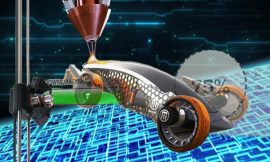

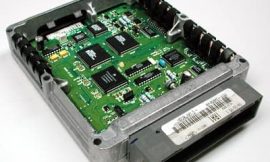



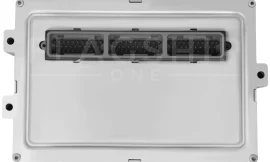




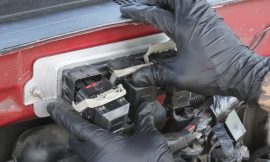

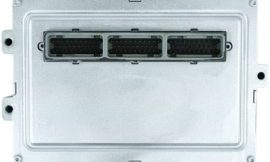

I have an 85 jeep cj7. the motor and ECM are from an 85 Pontiac trans am 305 TPI v8. The vehicle had been sitting for a while, 9 years after a complete rebuild. since I have had numerous issues I’ve replaced everything. I Was driving the vehicle it began to stumble and then shut down at a role on the interstate at 60mph. relays tested It looked like fuel pump but further investigation sent me to relay connector the power control wire is going to ECM the green/ white tracer wire has a steady intermittent stutter.? While using my Power
Probe I could hear an audible static like sound. I also recall hearing that while testing the fuel pump.it was found when I was testing the signal wire from the relay to the ECM connector as well as to the fuel pump? I can create a temporary start but fail to keep it running?? Any assistance or direction would be appreciated. Can you repair my ECM OBD1. if it is determined to be the fault area? Thanks
Hello, Please contact our support line directly at 516-766-2223 or connect through our websites live chat and one of our representatives will be happy to answer any questions you have.
[email protected]
Need a replacement